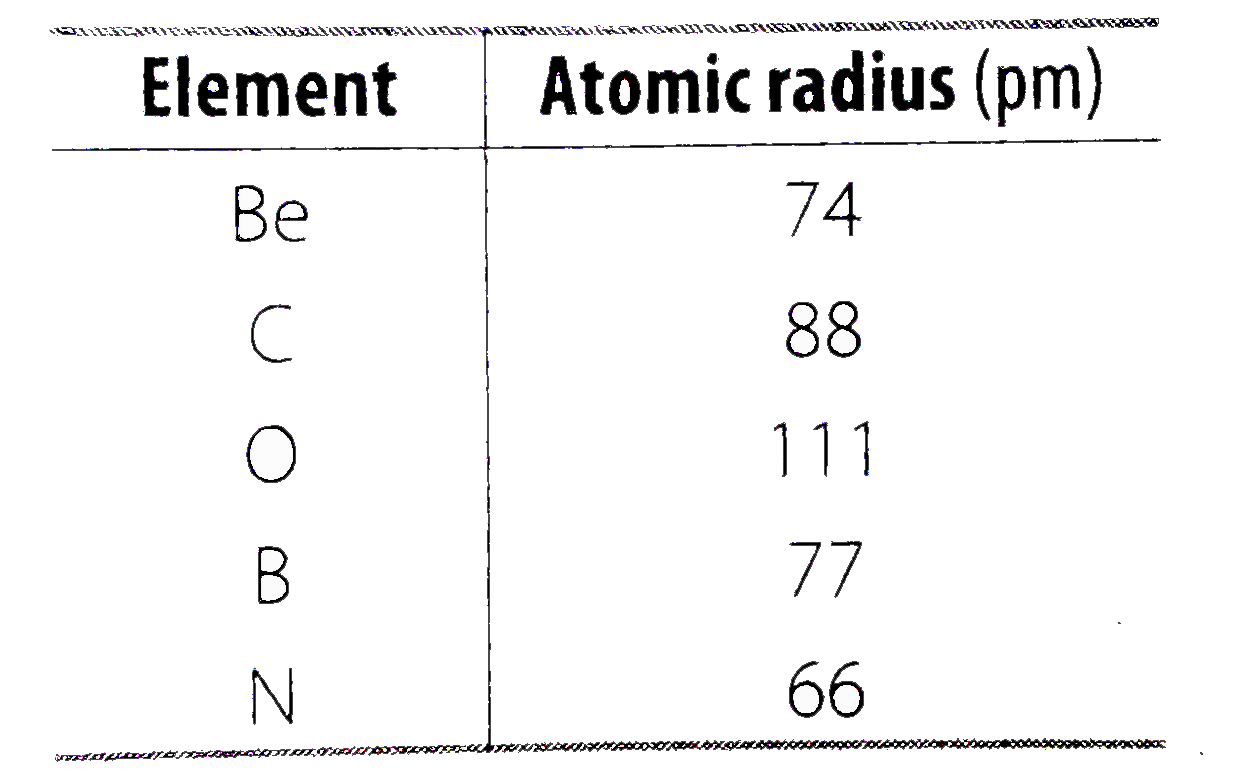The gradual decrease in atomic radius for lanthanoids element in not obeyed by
Eu only
Yb only
Both Eu and Yb
None
The correct Answer is:C
Step by step video & text solution for The gradual decrease in atomic radius for lanthanoids element in not obeyed by by Chemistry experts to help you in doubts & scoring excellent marks in Class 12 exams.
Updated on:21/07/2023Similar Questions
Give an explanation for each of the following observations :
(i) The gradual decrease in size (actinoid contraction) from element to element is greater among the actinoids than that among the lanthanoids (lanthanoid contraction).
(ii) The greatest number of oxidation states are exhibited by the members in the middle of a transition series.
(iii) With the same d-orbital configuration (d4),Cr2+ ion is a reducing agent but Mn3+ ion is an oxidising agent.
View SolutionThe atomic radius decrease in a period due to
View Solution
Knowledge Check
The correct decreasing order atomic radius is:
AF>O>SBF>S>OCS>F>ODS>O>FIonization enthalpy decreases down the group due to gradual increases in atomic size .However the deviation is observed as we move from
ASb toBiBAs toSbCP toAsDN toPThe correct order of increasing atomic radius of the following elements as:
AS<O<Se<CBO<C<S<SeCO<S<Se<CDC<O<S<Se
Match the correct atomic radius with the element.

View SolutionLanthanoids and actinoids are f-block elements in which the last electron enters the anti-penultimate energy level. The most common oxidation state of lanthanoids is +3, though +2 and +4 oxidation states are exhibited by some of the elements. In lanthanoid series, there is a progressive decrease in atomic and ionic radii, known as lanthanoid contraction. Unlike lanthanoids, actinoids show a large number of oxidation states.
Name an element of lanthanoid series, which is known to show +4 oxidation state. Is it a strong oxidising agent or reducing agent?
View SolutionLanthanoids and actinoids are f-block elements in which the last electron enters the anti-penultimate energy level. The most common oxidation state of lanthanoids is +3, though +2 and +4 oxidation states are exhibited by some of the elements. In lanthanoid series, there is a progressive decrease in atomic and ionic radii, known as lanthanoid contraction. Unlike lanthanoids, actinoids show a large number of oxidation states.
Which is the last element of the actinoid series? Write its electronic configuration.
View SolutionLanthanoids and actinoids are f-block elements in which the last electron enters the anti-penultimate energy level. The most common oxidation state of lanthanoids is +3, though +2 and +4 oxidation states are exhibited by some of the elements. In lanthanoid series, there is a progressive decrease in atomic and ionic radii, known as lanthanoid contraction. Unlike lanthanoids, actinoids show a large number of oxidation states.
Write the general electronic configuration of lanthanoids.
View SolutionThe correct order of increasing atomic radius of the following elements as:
View Solution
